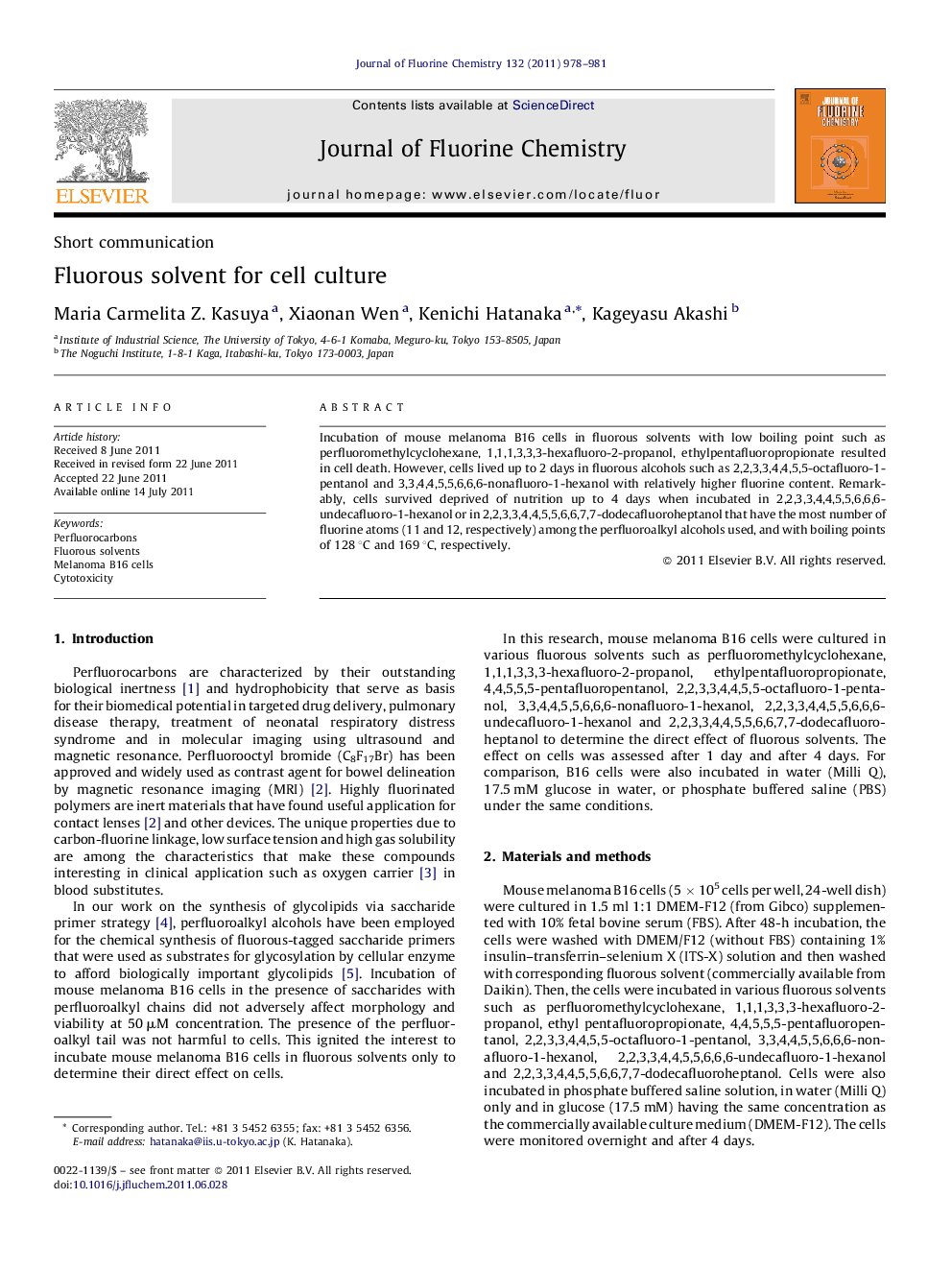| Article ID | Journal | Published Year | Pages | File Type |
|---|---|---|---|---|
| 1314898 | Journal of Fluorine Chemistry | 2011 | 4 Pages |
Incubation of mouse melanoma B16 cells in fluorous solvents with low boiling point such as perfluoromethylcyclohexane, 1,1,1,3,3,3-hexafluoro-2-propanol, ethylpentafluoropropionate resulted in cell death. However, cells lived up to 2 days in fluorous alcohols such as 2,2,3,3,4,4,5,5-octafluoro-1-pentanol and 3,3,4,4,5,5,6,6,6-nonafluoro-1-hexanol with relatively higher fluorine content. Remarkably, cells survived deprived of nutrition up to 4 days when incubated in 2,2,3,3,4,4,5,5,6,6,6-undecafluoro-1-hexanol or in 2,2,3,3,4,4,5,5,6,6,7,7-dodecafluoroheptanol that have the most number of fluorine atoms (11 and 12, respectively) among the perfluoroalkyl alcohols used, and with boiling points of 128 °C and 169 °C, respectively.
Graphical abstractMouse melanoma B16 cells were cultured in the presence of various fluorous solvents. Remarkably, cells survived deprived of nutrition up to 4 days when incubated in 2,2,3,3,4,4,5,5,6,6,6-undecafluoro-1-hexanol and in 2,2,3,3,4,4,5,5,6,6,7,7-dodecafluoroheptanol.Figure optionsDownload full-size imageDownload as PowerPoint slideHighlights► Mouse melanoma B16 cells were incubated in various fluorous solvents. ► Deprived of nutrition, B16 cells survived up to 4 days in perfluoroalcohols. ► The number of fluorine atoms of fluorous solvent affected B16 cell viability. ► Hydrophobicity of fluorous solvents accounts for survival of cells.
